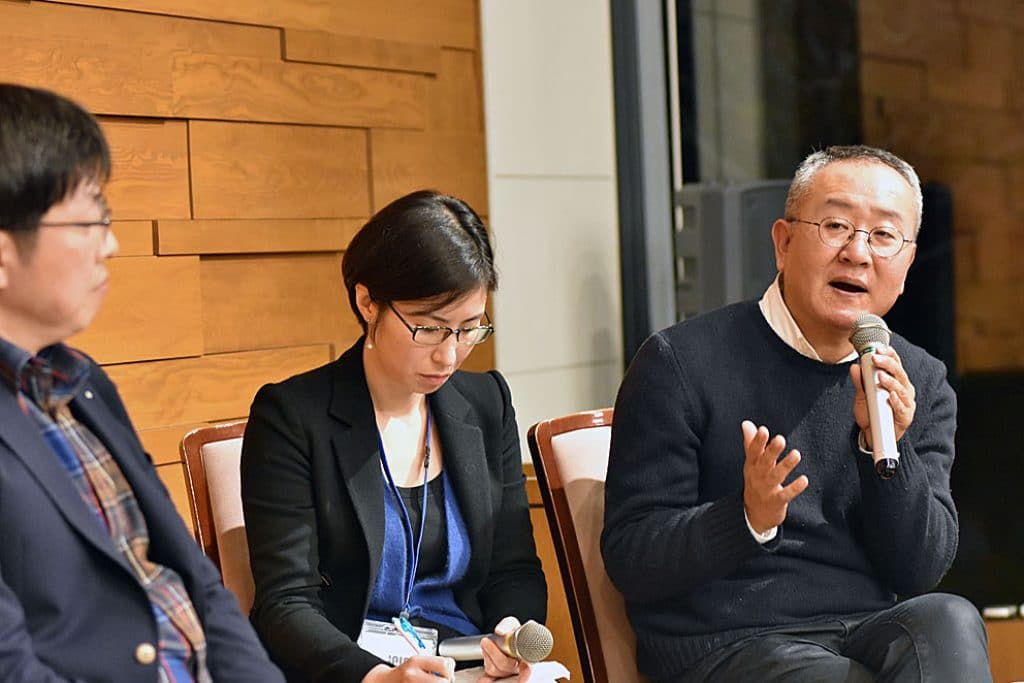How do TV dramas reflect contemporary society? The sixth seminar in this series looked at China-Japan-Korea relations through the medium of television and explored differences and similarities among the countries by examining how a similar story was depicted differently in Japan and Korea.
The 2007 Japanese television series Haken no Hinkaku painted a vivid portrayal of social relationships and work-life through the story of a woman who possessed many certifications and worked as a temporary employee. The series reflected the social circumstances around the easing of regulations under the Temporary Staffing Services Law passed under the Koizumi administration. It was remade in Korea in 2013 as Jikjangui Shin and also focused on the issue of the boom in irregular employment in Korea.
The producers of these two shows met for the first time at JCIE’s seminar, where they discussed the commonalities and differences reflected in these two dramas. The panel included Hiroko Hazeyama (Producer, Nippon Television), Ham Young Hoon (Producer, Korean Broadcasting System), and Kim Yung Duk (Researcher, Korea Creative Content Agency). Ms. Hazeyama noted that TV dramas have three elements: the lines, the story, and the concept. While linguistic and cultural differences make it difficult to share all three elements among Japan, China, and Korea, dramas can be localized by adjusting the words and story but sharing the original concept, as was done in the case of these two dramas, as Mr. Kim also pointed out. Mr. Ham suggested the possibility of cross-border collaboration among producers to create a concept together and produce separate versions.




November 14, 2015—China-Japan-ROK Youth Dialogue
September 16, 2015—Taste the Expanding World of Tea
June 5, 2015—Screening and Discussion: Learning from Pre-modern Korean Diplomacy
March 16, 2015—Interacting Cultures
January 16, 2015—A Fierce and Mutually Beneficial Rivalry
November 25, 2014—Opening up Future Possibilities through Stage and Video

